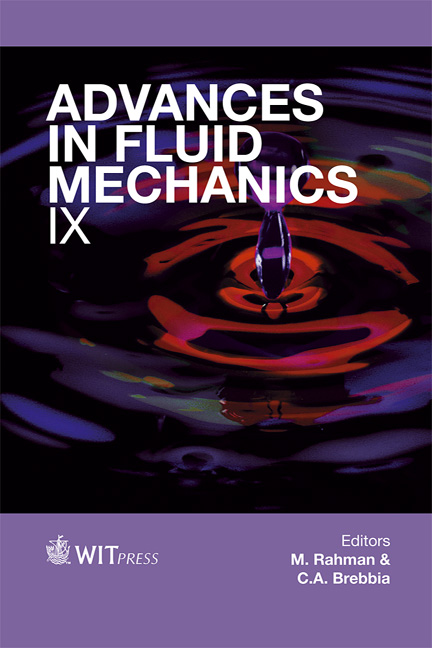Liquid–gas Interface Under Hydrostatic Pressure
Price
Free (open access)
Transaction
Volume
74
Pages
11
Page Range
251 - 261
Published
2012
Size
424 kb
Paper DOI
10.2495/AFM120231
Copyright
WIT Press
Author(s)
A. Gajewski
Abstract
The surface-tension forces and the pressure force at a gas–liquid interface were balanced. This was done at a differential control surface under hydrostatic pressure. As a result, three quadratic and two linear equations were derived representing the conditions for equilibrium at the interface. These equations have eight roots describing eleven different equilibrium states. The most important is the Young-Laplace formula under hydrostatic pressure which is denoted in the spherical coordinate system. Hence, it is a quadratic equation. The first root of this equation describes a pendant drop, drop or bubble, while the second one circumscribes a sessile drop. There are two solutions for the uniform pressure, where one of them is the Young-Laplace formula. It is concluded that the surface existence depends on the pressure difference between both bulk phases. A plane is formed when the surface-tension forces equilibrate themselves. Under uniform pressure the interface is a sphere and its other shapes need a pressure gradient. To form a drop or a bubble the pressure difference must be higher than its border value. A sessile drop exists if the gauge pressure is negative, while a pendant drop requires a positive value. A comparison with experimental results is done for the bubble. Keywords: Young-Laplace equation in spherical coordinates, static equilibrium, drop, bubble. 1 Introduction To describe the force balance on the liquid–gas interface, the Young-Laplace equation is usually applied. The equation must be solved for each point separately. Hence, it is computationally difficult to balance the surface-tension
Keywords
Young-Laplace equation in spherical coordinates, static equilibrium, drop, bubble.





